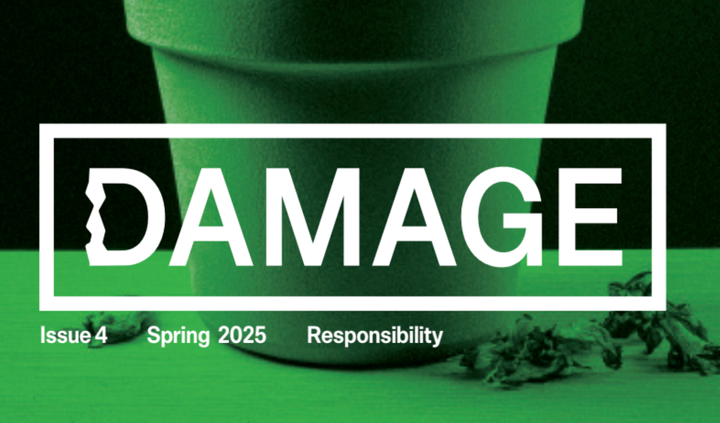The Malleability of Suffering
If the wishes of today’s neurotics were not subject to repression, who is to say what relevance grammatically incorrect personal pronouns would continue to bear.

In his early career, Freud returned again and again to the problem of the “choice of neurosis.” If the basic aetiology of neurotic suffering is always the same—the repression of a disagreeable thought (“Now that my sister is dead, I can marry her husband”), which leads to seemingly meaningless and unwanted symptoms (“I can’t move my legs”)—then how do we explain the variety of manifestations of neurotic suffering? When the thought goes under, what determines the way it rears its head once again?
In “The Disposition to Obsessional Neurosis, a Contribution to the Problem of the Choice of Neurosis,” a paper in which a number of previous threads in his earlier writing are tied together, Freud “lays it down that the grounds for determining the choice of neurosis are… in the nature of the dispositions and are independent of experiences which operate pathogenically.” In other words, it is not the nature of particular traumatic experiences or thoughts that trigger the neurosis but rather the neurotic’s disposition that determines which neurosis is “chosen.” By disposition Freud means not the natural constitution of a person but rather the products of early childhood development:
Where are we to look for the source of these dispositions? We have become aware that the psychical functions concerned—above all, the sexual function, but various important ego-functions too—have to undergo a long and complicated development before reaching the state characteristic of the normal adult. We can assume that these developments are not always so smoothly carried out that the total function passes through this regular progressive modification. Wherever a portion of it clings to a previous stage, what is known as a ‘point of fixation’ results, to which the function may regress if the subject falls ill through some external disturbance. Thus our dispositions are inhibitions in development.
In brief, Freud’s solution to the problem of the choice of neurosis runs as follows: the neurosis “chosen” corresponds to a specific stage of inhibited development. Thus, the manifestation of obsessional neurosis corresponds to an inhibition at the anal-sadistic stage of development; that of the “paraphrenias” (paranoia/dementia praecox) to the very early auto-erotic and narcissistic stages; etc. Freud admits that the hypothesis is at best incomplete: a full theory would require accounting for both the stages of development of the libido and the ego, as well as the conflict between their uneven developments.
However one slices it, it is clear that Freud believes the lines are laid down after childhood, and that when we break, we break along existing fault lines. “If we throw a crystal to the floor, it breaks; but not into haphazard pieces. It comes apart along its lines of cleavage into fragments whose boundaries, though they were invisible, were predetermined by the crystal’s structure. Mental patients are split and broken structures of this same kind.” But what determines the “points of fixation” around which the crystalline structure of the psyche forms?
Here experience is the key, not in the particular sense of specific traumatic experiences but rather the general experience wherein the cultural norms of one’s society are internalized. Inhibitions in development are not constitutionally determined but result from the confrontation with what Freud calls “civilized sexual morality.” It is only on account of the disciplining force of this morality, which dictates that certain things we do with our bodies or feel towards others are unacceptable, that inhibition arises. Freud illustrates the force of civilized sexual morality in a well-known “complete invention” that he calls “In the Basement and on the First Floor.”
The caretaker of the house inhabits the basement and its landlord, a wealthy and respectable gentleman, the first floor. Both have children, and we may suppose that the landlord’s little daughter is allowed to play, without any supervision, with the proletarian girl. It might very easily happen, then, that the children’s games would take on a ‘naughty’—that is to say, a sexual—character, that they would play at ‘father and mother’, that they would watch each other at their most private business and excite each other’s genitals. The caretaker’s girl, though only five or six years old, would have had an opportunity of observing a good deal of adult sexuality, and she might well play the part of seductress in all this. These experiences, even if they were not continued over a long period, would be enough to set certain sexual impulses to work in the two children; and, after their games together had ceased, these impulses would for several years afterwards find expression in masturbation. So much for their experiences in common; the final outcome in the two children will be very different. The caretaker’s daughter will continue her masturbation, perhaps, till her menstrual periods begin and she will then give it up with no difficulty. A few years later she will find a lover and perhaps have a baby. She will take up some occupation or other, possibly become a popular figure on the stage and end up as an aristocrat. Her career is more likely to be less brilliant, but in any case she will go through her life undamaged by the early exercise of her sexuality and free from neurosis. With the landlord’s little girl things will be different. At an early stage and while she is still a child she will get an idea that she has done something wrong; after a short time, but perhaps only after a severe struggle, she will give up her masturbatory satisfaction, but she will nevertheless still have some sense of oppression about her. When in her later girlhood she is in a position to learn something of human sexual intercourse, she will turn away from it with unexplained disgust and prefer to remain in ignorance. And now she will probably be subject to a fresh emergence of an irresistible pressure to masturbate of which she will not dare to complain. During the years in which she should exercise a feminine attraction upon some man, a neurosis breaks out in her which cheats her of marriage and her hopes in life. If after this an analysis succeeds in gaining an insight into her neurosis, it will turn out that the well-brought-up, intelligent and high-minded girl has completely repressed her sexual impulses, but that these, unconscious to her, are still attached to her petty experiences with her childhood friend.
The difference between the lives of these two, in spite of their having had the same experience, rests on the fact that the ego of one of them underwent a development with which the other never met. Sexual activity seemed to the caretaker’s daughter just as natural and harmless in later life as it had in childhood. The landlord’s daughter came under the influence of education and accepted its demands. From the suggestions offered to it, her ego constructed ideals of feminine purity and abstinence which are incompatible with sexual activity; her intellectual education reduced her interest in the feminine part which she was destined to play. Owing to this higher moral and intellectual development of her ego she came into conflict with the demands of her sexuality.
We can leave to the side Freud’s bourgeois biases: the point here is that cultural expectations determine “afterwards” the meaning of the events that create a particular disposition to neurosis. Particular traumatic experiences might not be determinative of the mode of expression of neurotic suffering, but this does not mean that the external world does not ultimately play the decisive role in the “choice of neurosis,” as immersion in the symbolic networks of a particular culture is what creates the relevant “disposition.”
Different cultural configurations contain different “demands of education”–different norms and moral codes to be internalized–and by extension different neurotic dispositions. By Freud’s theory, it would make sense that we do not see many instances of hysteria in a culture wherein the “phase of libidinal development… characterized by the primacy of the genitals” (associated by Freud to the disposition to hysteria) is not subject to deferred repression. But we might encounter other manifestations of suffering depending again on the particular “demands of education.” What precisely those manifestations look like requires the traversal of the unconscious, never an easy task, but the theory at least dictates that the range of neurotic “choices” differs quite markedly between a staid, Victorian culture and a sexually permissive but in other ways brutal neoliberal one.
With this in mind, claims of suffering today, if they are to be understood and not simply accepted, must be tied to the “demands of education” embedded in social structure. Common sense says that there has always been gendered suffering, that it has historically been subject to misunderstanding and oppression, and that the contemporary moment is one that is finally “giving voice” and acceptance to this suffering. Psychoanalysis, if it is not to shy away from its own conclusions, must raise the possibility that the choice to express one’s suffering in terms of gender is what the demands of neoliberal culture not only creates but also allows. “Civilized sexual morality” engendered a certain set of neurotic dispositions, and neoliberalism a different set. It would take a great deal of analytic work and theorization to figure out the range of options on the neurotic menu, as well as their specific aetiology. But if the wishes of today’s neurotics were not subject to repression, who is to say what relevance grammatically incorrect personal pronouns would continue to bear.
■
Aurora Borealis ate her own parents and has nothing to show for it but a vivid fantasy life.



